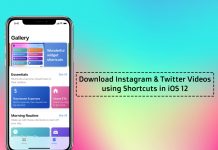If you’re using cellular data, it is very important to keep a check on your data usage because we mostly have daily data limits and if you exceed that limit, you’ll have to pay extra charges. So you should know how to monitor data usage on Android. This functionality is built into the core Android system and thus you do not have to use any third-party app, although you will find a lot of them on Google Play. In case you’re using iPhone, you have to rely on third-party apps since iOS does not have a useful data usage monitor. So let us find out the important steps needed below.
- Open Settings: First of all, open the Settings menu on your Android phone.
- Tap “Data Usage”: Now just tap on Data usage, which you will find in the top half of the menu. You will see set mobile data limit.

- Select Data usage cycle: Now select the period according to your data plan cycle or your preference. For example, you can setup for 30 days or 7 days. You can find the exact billing cycle from your carrier’s “My Account” section. This will help you monitor data usage on Android.

- Check “Set Mobile Data Limit” box: Now set a data limit for yourself according to your data plan. If you have 20GB of mobile data for a period of 30 days, you should put in 20GB data limit here. If you want to be on the safer side, then put in 18GB or less so that you have enough data left even after exhausting the data limit. Once you have enabled this option, a red bar will appear on the graph.

- Tap the red bar to adjust: Finally, you can set the limit by adjusting the up and down arrows to match your data plan. So once you hit this level, your phone will turn off cellular data off automatically and you will only be able to connect to Wi-Fi. In order to connect to mobile data again, you have to toggle it manually.

Bonus: How to reduce data usage on Android
If you’re someone who always complains about exhausting the data plan before time, you should know these few steps to reduce your data usage on Android.
- Limit Background Data: Go to Settings > Data Usage and then tap on any app. You can tap the “Restrict Background Data” or “Background Data”. This will limit mobile data usage of that app from the operating system level. The beauty of this option is that the app will be able to use data if the phone is connected to Wi-Fi.

- Turn off All Background data: If limiting background data is not enough, you can turn off all background data completely with the flip of a switch. Go to Data Usage menu and then check “Restrict Background Data”. This option will turn off background data for all applications.

- Turn Off Auto Updates: You should definitely turn off automatic app updates for your Android smartphone. This will save unnecessary app updates using mobile data. In case you have unlimited Wi-Fi access, you can set it to “Auto-update over Wi-Fi only”. You will find this option in Play Store > Settings.

This brings us to the end of how to monitor data usage on Android. Hopefully, you will not exceed your mobile data usage after following these steps. Also, follow the nifty tips for reducing cellular data usage, especially when you’re running on low mobile data and the billing cycle is far away. Do let us know in the comments section if you have any other suggestions.









